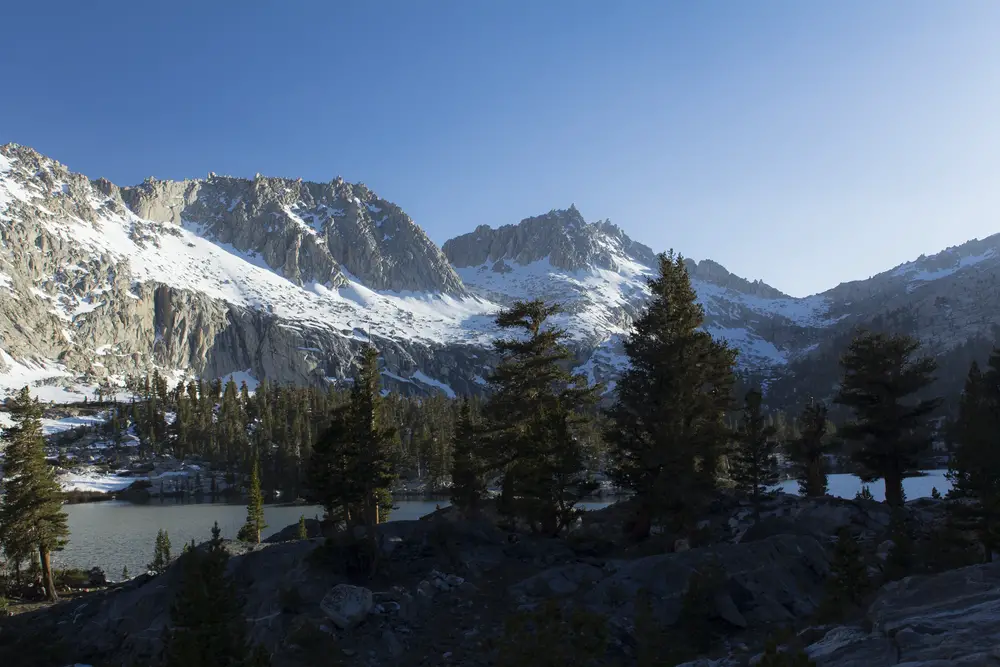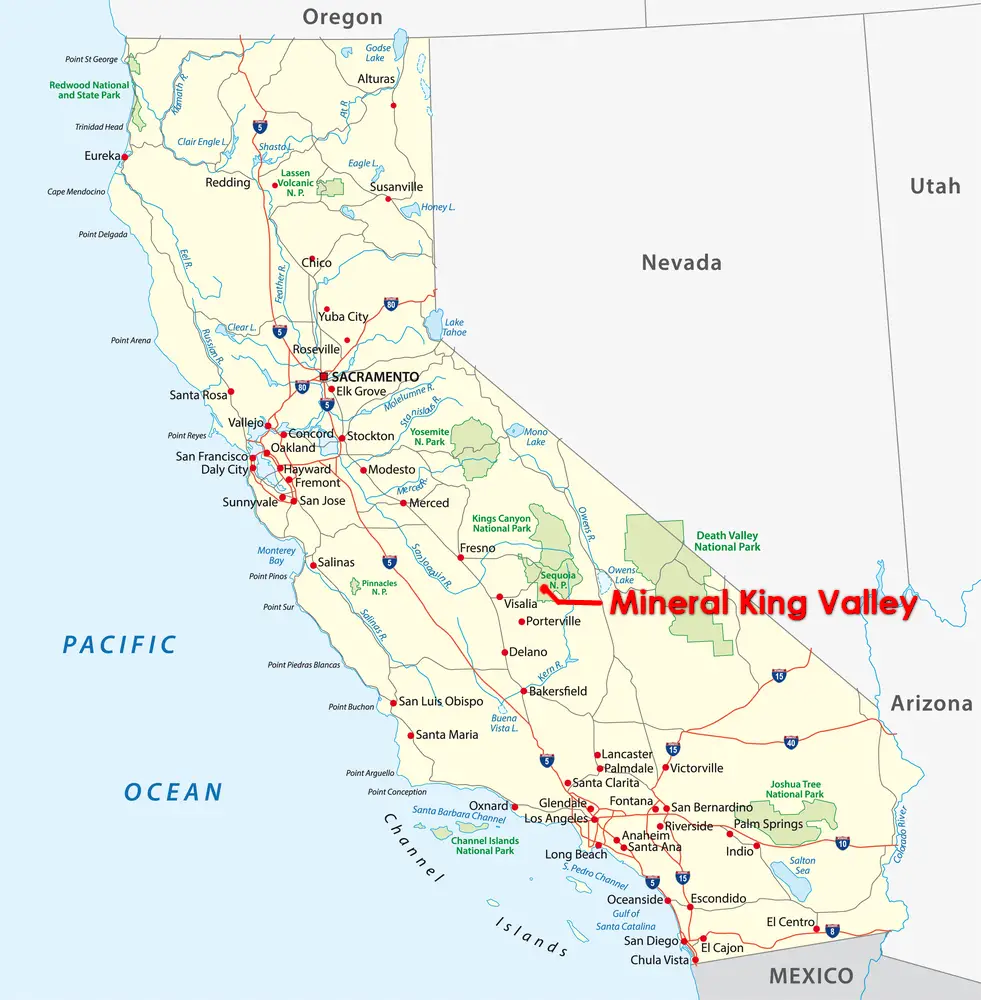Walt Disney is known for creating Mickey Mouse, Disneyland, and Walt Disney World, but he also wanted to take the Disney empire into the mountains by building a ski resort in the 1960s. But a long battle ensued between the Walt Disney Company and those who wanted to keep the pristine environment of the Mineral King Valley in California’s Sierra Nevada mountains the way it was.
The Mineral King Valley almost became a mining hotspot well before Disney had any plans to build a ski resort. Silver was discovered in the area in 1872, and prospectors began flooding in to find their fortune. A town of 3,000 grew on the valley floor by the following year. But the boom didn’t last long. In the subsequent years, avalanches and poor returns from the mines pushed people out, and the town was abandoned by 1882.
But then the valley began to be visited by campers and hikers wanting to enjoy the environment. In 1890, Congress created the Sequoia National Park nearby, and more visitors started arriving in the valley. Some visited for recreation while others built cabins for summer use.
Congress enlarged Sequoia National Park in 1926, but Mineral King Valley wasn’t included in the new boundary because of a doctrine at the time where areas that could be used for farming or mining wouldn’t be under the protection of the national park. Mineral King once had silver mining, and even though it wasn’t going on at the time, it had the potential to be used as a mine in the future.
The public land of Mineral King Valley was put under the control of the Forest Service, which had the power to manage it for economic reasons and not recreational ones. 1965, the U.S. Forest Service asked for proposals for a new ski resort to be built in Mineral King, and the proposal that was accepted came from Walt Disney Productions.
The interest in building a ski resort by Walt Disney wasn’t new. He had served as the director of pageantry during the 1960 Winter Olympics, which took place in Squaw Valley, California, and he was a skier. He also had built the Matterhorn at Disneyland, which had been inspired by a trip he took to the Swiss Alps.
He envisioned a real ski resort with an alpine village with a 1,030-room hotel, ice rinks, tennis courts, pools, ten restaurants, and a golf course, all in Mineral King Valley. There were plans for 22 ski lifts, gondolas, and ski runs that would be four miles long. Projections for revenue from the project were estimated at $600 million in the first ten years, mostly coming from the guest amenities.
Another Disneyesque design would be a show with robotic bears that sang. This is what eventually became the Country Bear Jamboree, which was installed at Disney World years later in the Magic Kingdom park. Transportation to and from the resort was also going to be specifically designed. A huge parking garage that could hold 3,600 automobiles over eight to ten levels was proposed so that the resort would be free of automobiles, and a railway would transport guests to and from the resort area.
The cost of constructing the massive resort, along with all the needed infrastructure such as water, power, and sewage, was estimated at $35 million. This was more than double what it cost to build Disneyland more than ten years before.
But Walt Disney’s vision didn’t sit well with those who already used the valley for recreational purposes. There were few campsites, and only 24,000 annual visitors visited the spot, mainly in the summer. Disney Productions estimated that the visitor count would swell to almost a million per year.
In addition, the Wilderness Act was passed in 1964, which protected certain lands “in their natural condition” and was to “secure for present and future generations the benefits of wilderness.” The Act designated 91 million acres as wilderness and additional study on what other lands could be designated as protected. This did not help Disney’s bid to build the new ski resort in Mineral King Valley.
The Sierra Club was the first to respond to the deal between the Forest Service and Disney in 1965. The group began its legal battle with the Forest Service and Disney by opposing the all-weather road that was going to go through Sequoia National Park, and they lobbied the National Park Service. But the National Park Service and interior secretary signed off on the road, and the Sierra Club sued in 1969.
The argument was that too much national forest land was being given to Disney, and the road was illegal that would have gone through the national park. A preliminary injunction was granted that stopped everything, but when the case went to the Supreme Court in 1972, it ruled against the Sierra Club. The court stated that the group didn’t have standing to sue under the Administrative Procedure Act because they hadn’t shown how the ski resort would injure anyone else other than the members of the group.
In 1966, Walt Disney died, but the Disney Company continued the plan to build the ski resort. A Disney executive in that same year told the Los Angeles Times that if Disney had been alive, he would have decided to pull out of the project due to the controversy it was creating. Interestingly, in 1955, the Sierra Club had made Walt Disney an honorary life member.
The battle was far from over, however. Before the Supreme Court’s ruling, the National Environmental Policy Act had been passed in 1970 that made federal agencies complete studies on the environmental impact of certain projects. This meant that even with the Supreme Court ruling against the Sierra Club two years later, the Forest Service was obliged to study the environmental impact the ski resort would have on Mineral King.
The Forest Service released its environmental impact study in 1976, and the Sierra Club had been revising its lawsuit to meet the standards set by the Supreme Court before this time. But the Disney Company had changed its mind since it proposed the plan eleven years before and no longer wanted to build a ski resort in Mineral King. The company had spent $400 million building Disney World by 1971 and estimated that even if the lawsuit by the Sierra Club had somehow been dropped completely, it would have still taken 13 more years to build the Mineral King ski resort.
The whole project was officially dead when President Carter signed the National Parks and Recreation Act of 1978. This put Mineral King inside the Sequoia National Park. The area is now designated as a Federal Wilderness Area, and the only way to get there is by a one-lane road.
Sources: SFGate.com, KCET, OC Register, Department of Justice, Oyez



